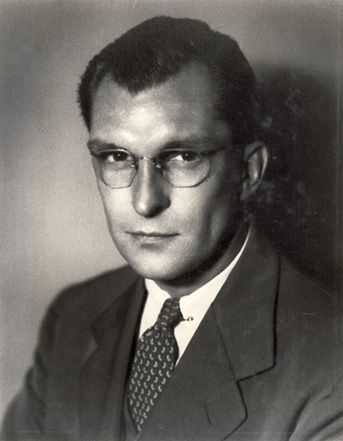 Horace Gilbert Smithy was born in Norfolk, Virginia in 1914. He initially studied medicine at the University of Florida and later at the University of Virginia. He graduated in 1938 and became an intern at Roper Hospital in that same year. Smithy remained at the Medical College of South Carolina, eventually becoming Assistant Professor of Surgery, despite his young age. Throughout his short career at the Medical College, Smithy worked tirelessly for a better treatment for valvular heart disease, in particular those diseases caused by rheumatic fever. Smithy died at the age of 34, in 1948.
Horace Gilbert Smithy was born in Norfolk, Virginia in 1914. He initially studied medicine at the University of Florida and later at the University of Virginia. He graduated in 1938 and became an intern at Roper Hospital in that same year. Smithy remained at the Medical College of South Carolina, eventually becoming Assistant Professor of Surgery, despite his young age. Throughout his short career at the Medical College, Smithy worked tirelessly for a better treatment for valvular heart disease, in particular those diseases caused by rheumatic fever. Smithy died at the age of 34, in 1948.
Horace Smithy’s short but vibrant career was defined by the fact that he himself was a victim of rheumatic aortic and mitral stenosis. While he researched many different methods by which such a disorder could be corrected, his most successful innovation was the Valvulotome.
The Horace Gilbert Smithy, Jr., M.D. Papers
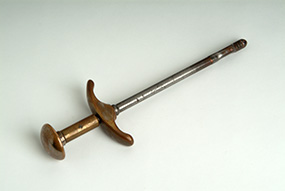
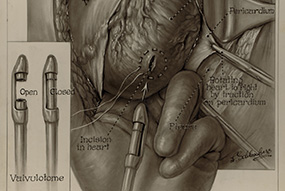
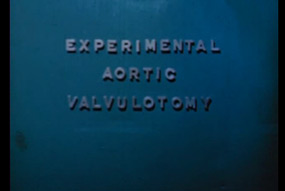
Valvulotome
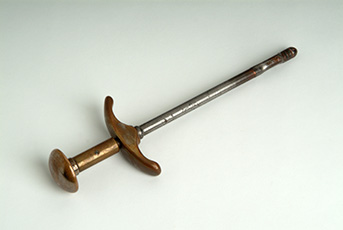
The Valvulotome consisted of a plunger with a set of jaws on the end, which opened and closed manually. This instrument was designed to be inserted through a purse-string suture in a beating heart, where it would theoretically bite out a portion of the stenotic valve, thus enlarging the opening and relieving the stenosis, or stricture.
Smithy’s successes with the Valvulotome partially hinged on his technique of Injecting Procaine into the myocardium. The injection controlled any arrhythmia that might be caused by the manipulation of the heart during valvular surgery.
Smithy performed several highly publicized surgeries using the Valvulotome (and his procaine method). He achieved success in several cases, although this was mostly short-lived.
Better operations than Smithy’s were already accomplished, and their value would become apparent. In going the wrong way, Smithy nonetheless achieved positive results and invited comparisons that eventually led to the realization that commissurotomy was the operation of choice. Smithy’s innovation of procaine injection into the myocardium at the site of operative entry to prevent arrhythmia was a significant contribution of the time.
Smithy leaves no legacy of a cure of valvular heart disease; his successes came early in the revival of the surgical effort to treat mitral stenosis. But his work, well publicized at the time, encouraged patients and physicians and prompted the concept that operative treatment of valvular heart disease could be successful.
While the advances that could have saved Smithy’s own life were yet to be made, his certainty that there was a cure for valvular heart disease is perhaps the most important of his innovations.
See the MUSC Department of Surgery’s page on Horace Smithy and the valvulotome: http://academicdepartments.musc.edu/surgery/events/smithy/horace_smithy.htm
Ferrara, B.E., ‘Horace Smithy: Pioneer Heart Surgeon’, Southern Medical Journal, Vol. 84, No. 12, December 1991, p. 1491.
Pericardium Divided Anteriorly
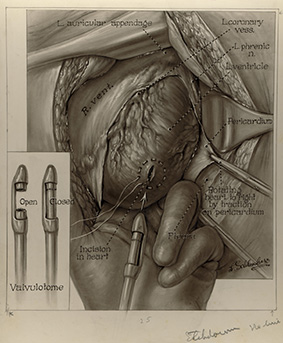
Illustration of the valvulotome and heart showing where to make the incision, items identified, ""l. auricular appendage, L. coronary vessel, L. Phrenic n., V. ventricle, Pericardium, Totaling heart to fight by traction on pericardium, Pieura, incision in heart, R. vent., Valvulotome, open, closed"", drawing signed by L. Schlosoberg.
